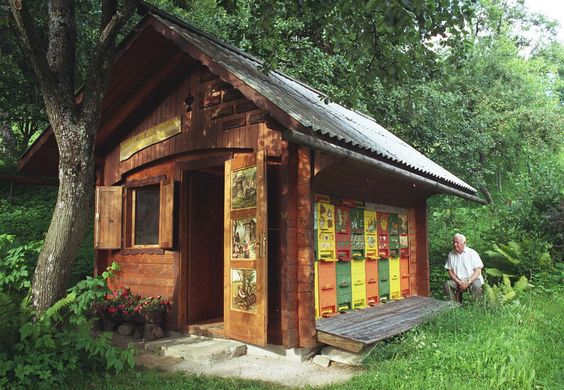Creating a Buzz about Bee-keeping
24.5.2016 | Fiona Thompson
Spend any time in Slovenia and before long you’ll notice how important bees are to Slovenian people. It is estimated that there are over 10,000 bee-keepers in Slovenia, most of them small-scale domestic enterprises, sometimes for commercial sale but often for personal use. It should come as no surprise then that Slovenia is lobbying the United Nations to have May 20 declared World Bee Day. With the global bee population in decline over the last couple of decades, they believe that something needs to be done to combat the problem. But why is bee-keeping so important in Slovenia and how did this come about?
Slovenia is home to the Carniolan bee and is often referred to the Bee-keeper of Europe. Bee-keeping here goes back centuries but modern bee-keeping owes much to Anton Jansa who was an eighteenth-century pioneer of the practice of apiculture – the art and science of bee-keeping: in fact, so influential was he that the date of his birthday has been chosen for the proposed World Bee Day. Jansa had actually trained as an artist but he was an advisor on bee-keeping at the Habsburg court in Vienna. Have you seen those little huts in which the hives are stacked one on top of the other? That was one of Jansa’s innovations—in the early days of bee-keeping in Slovenia bees were kept in hollowed out tree trunks — and those interested in bee-keeping can visit Jansa’s very own beehive at Breznica, near Jesenice.
These little boxes are known as ‘kranjiči’ and many of the older ones are painted with folk art designs; the practice is recognised as a distinct and important area of Slovenian traditional art and there’s even a museum dedicated to the pretty painted boxes just outside Ljubljana. Originally the panels were painted by travelling artists who moved from village to village, sometimes exchanging his skill for a bed for the night and dinner; some of these wandering artists became very well known.

Slovenians love honey and appreciate the many different types available, depending on what type of flowers and trees predominate in the area each kind is made. Linden blossom honey (lipa) and chestnut honey are particularly good but you can also find dandelion honey, forest honey, and a distinctive pine honey. Several traditional desserts are not complete without honey but honey is also valued for its medicinal benefits and some spas even offer beauty treatments based on the nectar. A delicious honey-based liqueur medica has to be sampled, another product in the wide selection aimed at tourists as apiculture becomes an important part of the tourism experience.











